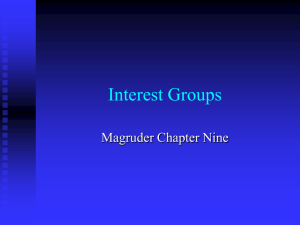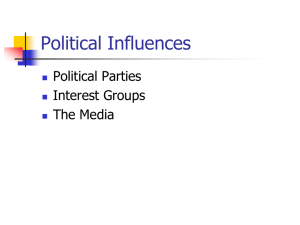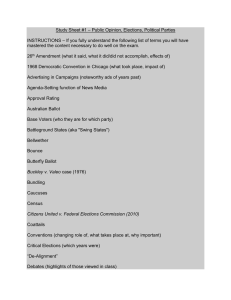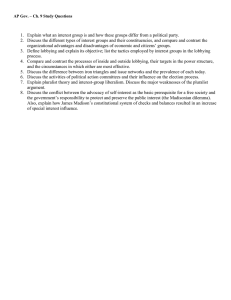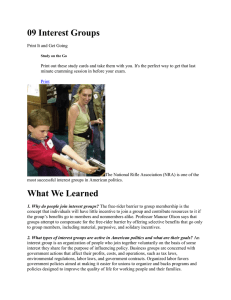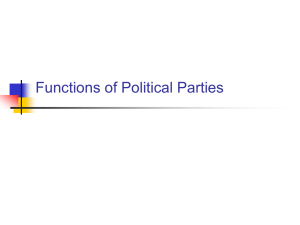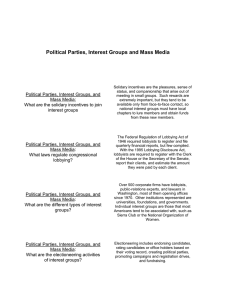Chapter 9 Essentials (Study Guide)
advertisement
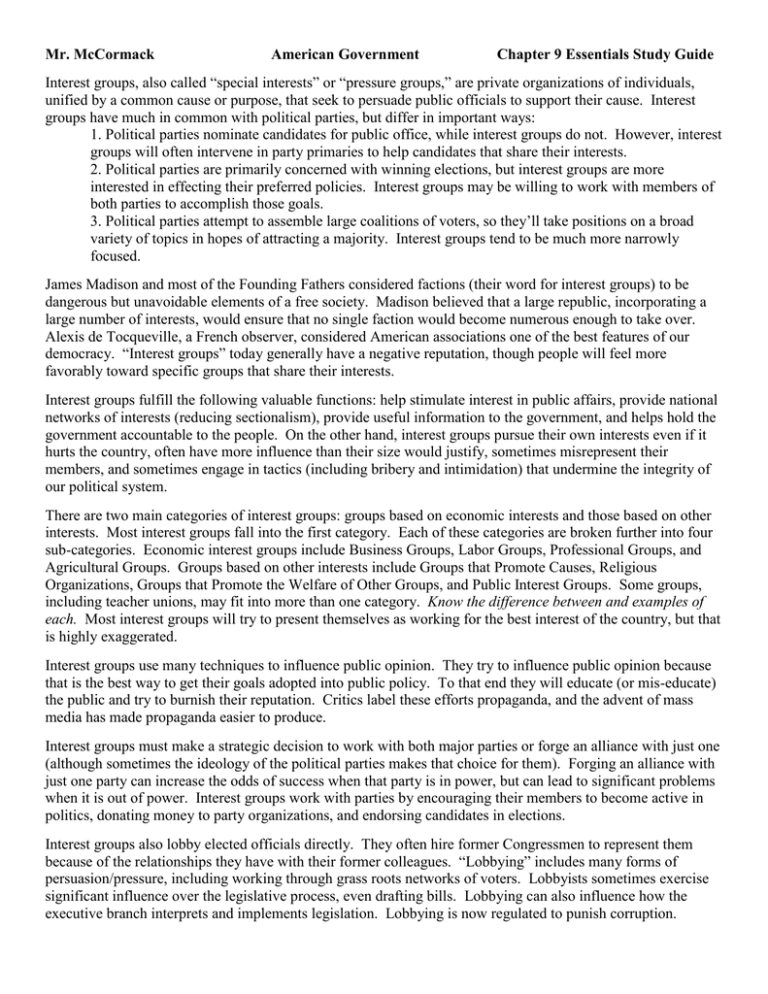
Mr. McCormack American Government Chapter 9 Essentials Study Guide Interest groups, also called “special interests” or “pressure groups,” are private organizations of individuals, unified by a common cause or purpose, that seek to persuade public officials to support their cause. Interest groups have much in common with political parties, but differ in important ways: 1. Political parties nominate candidates for public office, while interest groups do not. However, interest groups will often intervene in party primaries to help candidates that share their interests. 2. Political parties are primarily concerned with winning elections, but interest groups are more interested in effecting their preferred policies. Interest groups may be willing to work with members of both parties to accomplish those goals. 3. Political parties attempt to assemble large coalitions of voters, so they’ll take positions on a broad variety of topics in hopes of attracting a majority. Interest groups tend to be much more narrowly focused. James Madison and most of the Founding Fathers considered factions (their word for interest groups) to be dangerous but unavoidable elements of a free society. Madison believed that a large republic, incorporating a large number of interests, would ensure that no single faction would become numerous enough to take over. Alexis de Tocqueville, a French observer, considered American associations one of the best features of our democracy. “Interest groups” today generally have a negative reputation, though people will feel more favorably toward specific groups that share their interests. Interest groups fulfill the following valuable functions: help stimulate interest in public affairs, provide national networks of interests (reducing sectionalism), provide useful information to the government, and helps hold the government accountable to the people. On the other hand, interest groups pursue their own interests even if it hurts the country, often have more influence than their size would justify, sometimes misrepresent their members, and sometimes engage in tactics (including bribery and intimidation) that undermine the integrity of our political system. There are two main categories of interest groups: groups based on economic interests and those based on other interests. Most interest groups fall into the first category. Each of these categories are broken further into four sub-categories. Economic interest groups include Business Groups, Labor Groups, Professional Groups, and Agricultural Groups. Groups based on other interests include Groups that Promote Causes, Religious Organizations, Groups that Promote the Welfare of Other Groups, and Public Interest Groups. Some groups, including teacher unions, may fit into more than one category. Know the difference between and examples of each. Most interest groups will try to present themselves as working for the best interest of the country, but that is highly exaggerated. Interest groups use many techniques to influence public opinion. They try to influence public opinion because that is the best way to get their goals adopted into public policy. To that end they will educate (or mis-educate) the public and try to burnish their reputation. Critics label these efforts propaganda, and the advent of mass media has made propaganda easier to produce. Interest groups must make a strategic decision to work with both major parties or forge an alliance with just one (although sometimes the ideology of the political parties makes that choice for them). Forging an alliance with just one party can increase the odds of success when that party is in power, but can lead to significant problems when it is out of power. Interest groups work with parties by encouraging their members to become active in politics, donating money to party organizations, and endorsing candidates in elections. Interest groups also lobby elected officials directly. They often hire former Congressmen to represent them because of the relationships they have with their former colleagues. “Lobbying” includes many forms of persuasion/pressure, including working through grass roots networks of voters. Lobbyists sometimes exercise significant influence over the legislative process, even drafting bills. Lobbying can also influence how the executive branch interprets and implements legislation. Lobbying is now regulated to punish corruption.

